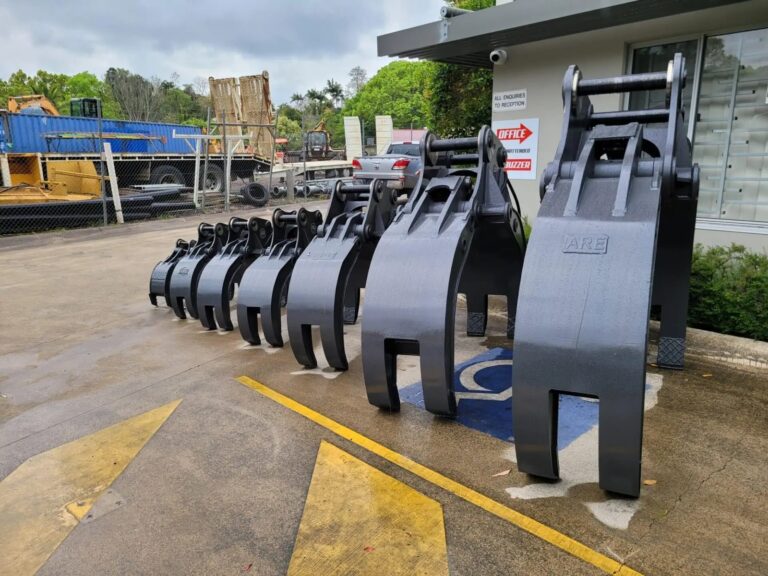World class hydraulic grab attachments are able to cope with the multiple materials such as scrap metals or timber logs and debris with maximum efficiency and increases productivity in construction, demolition and material handling. Selecting a grabber according to performance, durability, and cost-effectiveness will certify that you do maximize your bucks. This guide will aid you in making a sound decision about the best hydraulic grabber for your work.
Consider, for a moment, the effortless maneuvering of heavy materials. This instantly causes an efficiency jump in productivity while on the job. With the right hydraulic grab attachment, any excavator becomes an extremely heavy-duty, high-efficiency material-handling machine. The only question is how to choose from among such a variety of products available on the market! Now let’s talk about the primary factors that should help you reach that all-important ideal!
Usually made for the purposes of lifting, holding, and moving materials like rock, timber, and scrap metals, the hydraulic grabber falls under the category of excavator attachments and implements. Hence, efficiency in operation is increased while the burden is lessened and safety is improved from any job site. Hydraulic grabs can be categorized into rotating with several applications and fixed for one application; rather, their selection is based on excavator needs, with the type of material being handled, and the operations involved as primary criteria.
Understanding Hydraulic Grabbers
hydraulic grabber are usually an attachment for excavators that lift, hold, or move material, like scrap, rocks, or logs. They do this through hydraulic power. These grabbers are a great choice for construction, forestry, and waste management due to their productivity, minimizing manual labor, and safety in heavy material handling.
Benefits of Using a Hydraulic Grabber
The investment in a high-quality hydraulic grabber would prove beneficial in the following ways:
- Increased productivity: For superior handling of speedily and easily handled materials.
- Reduced labor costs: Fewer manual workers are needed for lifting work.
- Versatility: It can be applied to other uses.
- Increased Safety: Fewer manual handling hazards.
- Lower Maintenance Costs: Long-life components.
Best Practices for Using a Hydraulic Grabber
For optimal durability and productivity, it is important to observe the following practices.
- Inspect hydraulic lines for leaks and damages.
- Lubricate moving parts according to manufacturer recommendations.
- Do Not overload, to avoid damaging the grabber as well as the excavator.
- Operator to be trained for the proper handling technique.
- While not in use, store the grabber properly out of exposure to outdoor weather.
Factors to Consider When Choosing a Hydraulic Grabber
The compatibility of an Excavator grabs with hydraulic grabber or type of grabber, material strength, grip capacity, hydraulic efficiency, and number of other factors selects a particular hydraulic grabber. It also counts installation ease, maintenance, and safety features into consideration. All these factors allow the user to choose the most appropriate hydraulic grabber suitable for optimized performance. The appropriate grabber improves productivity, lowers costs, and ensures higher operational safety; therefore, it merits an investment in heavy-duty applications.
Material and Build Quality
- Construction of high strength steel to resist heavy loads.
- Wear resistant edges for durable performance.
- Reinforced hydraulic cylinders to take the maximum pushing.
- Corrosion resistant coating ensures protection in hostile environments.
Ease of Installation and Maintenance
- Quick-attach system: Less downtime for attachment changes.
- Grease points within easy reach: Easy relubrication and maintenance.
- Replacement parts availability: Securing spare parts when they are needed.
Grip Strength and Capacity
- Opening Width: It Should Accommodate Materials That Are Handled.
- Closing Force: Strong Gripping Should Prevent Material Slipping.
- Loading Capacity: The Grabber Should Have a Weight Limit That Suits Work Requirements.
Safety Features
- Safety from overload: Protection against overloading of weight handling.
- Hydraulic check valves: Hold in case of loss of pressure.
- Non-slip grip design: Make material handling more efficient.
Frequently Asked Questions
What is a hydraulic grabber used for?
Hydraulic grabbers, as the name implies, are equipment that rely on hydraulic force to lift, hold, or transfer weight materials such as scrap metals, logs, and even stones in construction, demolition, or material handling applications.
Where can I buy a high-quality hydraulic grabber?
Partybros, among other firms, provides customers with the ability to purchase hydraulic grabbers of reliable quality, durability, and after-sales service quality. The establishment sells all sorts of hydraulic grabbers as per requirement.
How do I know if a hydraulic grabber is compatible with my excavator?
Ensure that the loading capacity, hydraulic flow rate, and loading attachments are matched perfectly with the face shovels in any digger machine you might have.
CONCLUSION
It is important to select the right hydraulic grabber that is consistent with your excavator to enhance efficient and safe working regarding material handling operations. Features like compatibility with your excavator, types of grabbers, raw materials quality, and efficiency of hydraulics all matter when making decisions. Partythabos also apparently contributes to the durability and reliability of a well-manufactured hydraulic grabber and the best productivity.


